NOTES PAGE

To download pdf files, you will need
Acrobat Reader. Click on the icon to the left for a free download of this
program.
| Click on Image to Download | |||
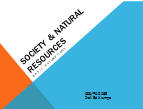 |
Society & Natural Resources: Basic Assumptions | ||
 |
Roots of Government Role of Conservation of Public Lands | ||
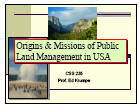 |
Origins & Missions of Public Land Management in USA | ||
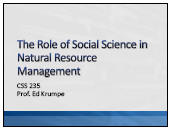 |
The Role of Social Science in Natural Resource Management | ||
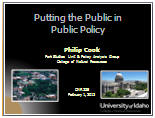 |
Putting the Public in Public Policy by Phil Cook | ||
 |
Moving from Conflict to Consensus in Small Groups | ||
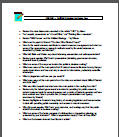 |
Exam 1 Study Guide | ||
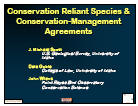 |
Conservation Reliant Species &
Conservation Management Agreements presented by Dr. Mike Scott Click image to view video >>> |
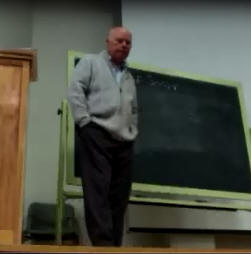 |
|
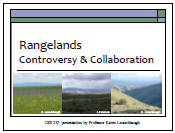 |
Rangelands:
Controversy and Collaboration by Professor Karen Launchbaugh |
||
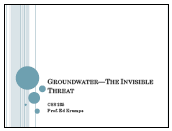 |
Groundwater--The Invisible Threat | ||
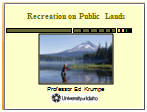 |
Recreation on Public Lands | ||
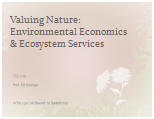 |
Valuing Nature: Environmental Economics | ||
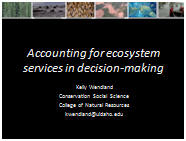 |
Accounting for Ecosystem
Services in Decision-Making by |
||
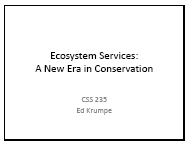 |
Ecosystem Services: A New Era in Conservation | ||
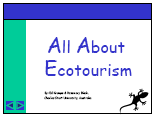 |
All About Ecotourism | ||
 |
International Issues in
Conservation: A Case Study in Southern Ecuador by Amy Forsgren |
||
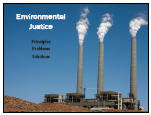 |
Environmental Justice | ||
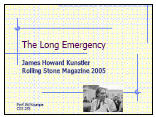 |
Energy Development and The Long Emergency |
||
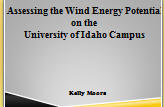 |
Assessing Wind Energy Resources on UI
Campus by Kelly Moore |
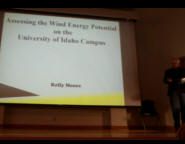 |
|
 |
The Science Behind Global Climate
Change by Professor Tom Bitterwolf + Print (6 slides per page) or (2 slides per page) |
||
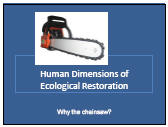 |
Human Dimensions of Ecological
Restoration |
||
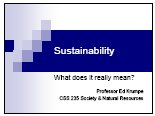 |
Sustainability--What Does It
Really Mean?
|
||
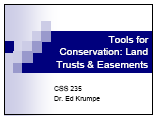 |
Tools for Conservation: Land
Trusts and Easements |
||
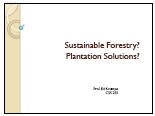 |
Sustainable Forestry Concepts
|
||
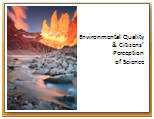 |
Environmental Quality and Citizens' Perception of Science | ||
| Notes on the history of salmon in Western North America | |||
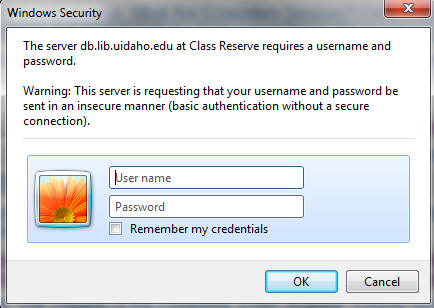 |
reserve Pap43hu | ||
Click here to download selected slides from lecture on Aldo Leopold and the Land Ethic
Click here for NOAA Social Sciences tools table
Click here for a table comparing ecosystem and traditional management
Click here for list of key characteristics and flow chart for adaptive management
Click here for additional information on a broader array of social science tools (from NOAA website)
Here also are some links you can follow if you are interested learning more about the salmon issue:
Adaptive Management Implementation Plan
(The September 15, 2009 White House Plan)
http://www.salmonrecovery.gov/Biological_Opinions/FCRPS/2008_biop/docs/AMIP_09%2010%2009.pdf
2008 Columbia-Snake Basin Biological Opinions
(May 5, 2008)
http://www.nwr.noaa.gov/Salmon-Hydropower/Columbia-Snake-Basin/final-BOs.cfm
Lower Snake River Juvenile Salmon Migration Feasibility Study
(September 2002)
http://www.nww.usace.army.mil/lsr/
Figures that demonstrate that the legally agreed-on allocation of water from the Colorado is NOT sustainable:
1928 Boulder Canyon Act:
Allocated 7.5 acre-feet million to upper basin, 7.5 acre-feet million
to lower basin
(written to require delivery of 75 million acre-feet on a 10 year average to
the lower basin
1944: 1.5 million acre-feet allocated to Mexico
1963 Supreme Court case: 1 million acre-feet allocated to the 5 reservations on the main stem of the river
Total legal allocations: 7.5+7.5+1.5+1= 17.5 million acre-feet of water annually.
BUT: the Colorado averages only 13 million acre-feet per year (figure based on tree ring analysis.)
THEREFORE: The legal allocations are 4.5 million acre-feet greater than the average water production by the river...A HUGE deficit...AND, this does not account for climate change!
reserve Pap43hu